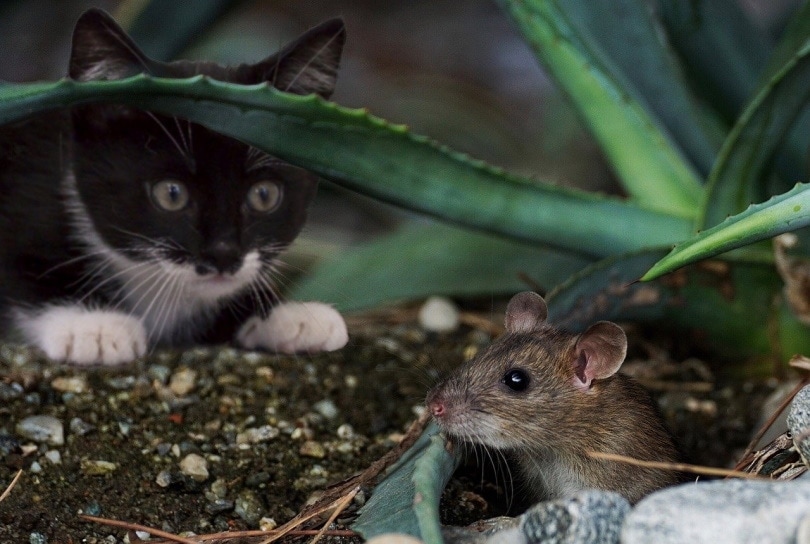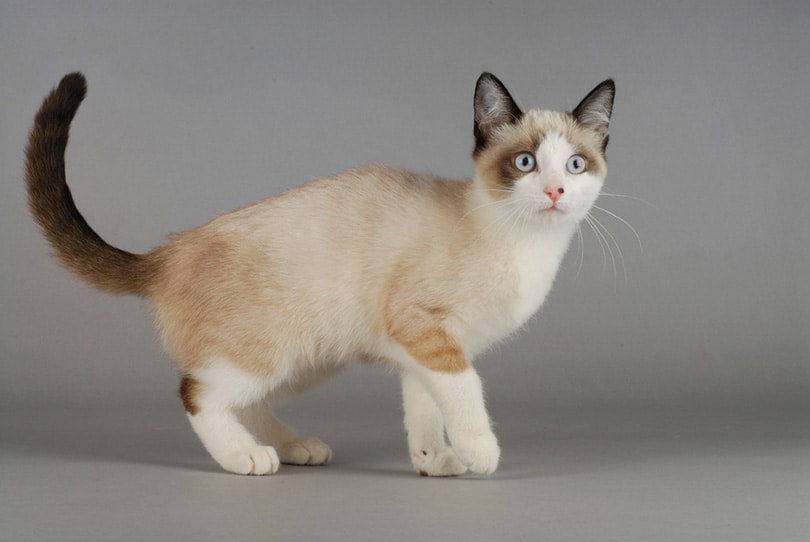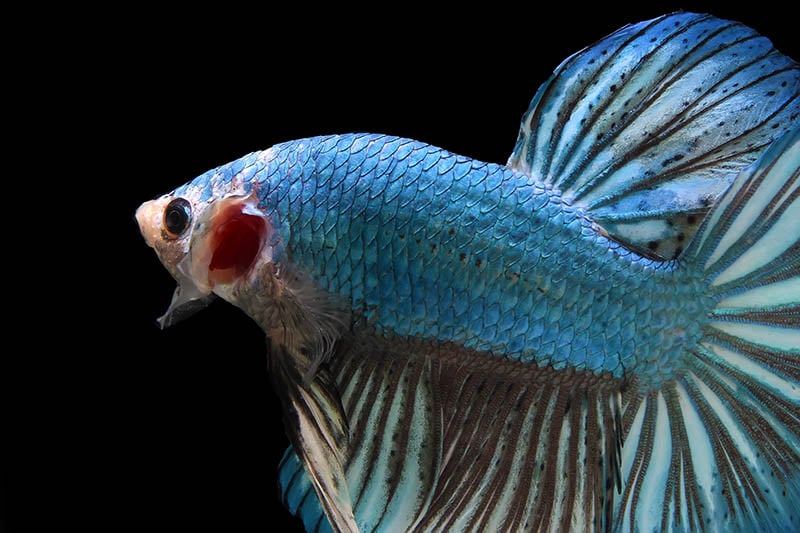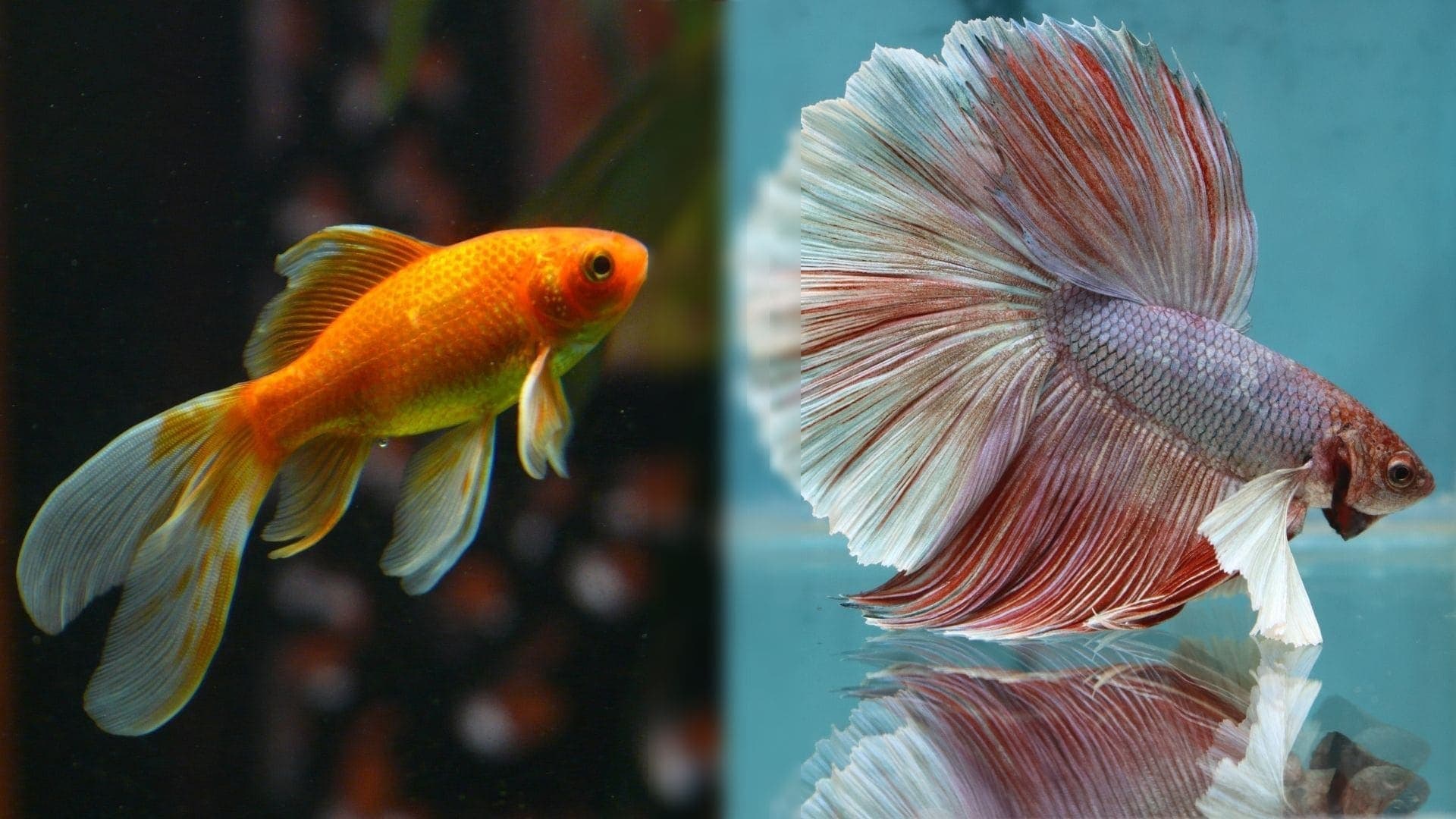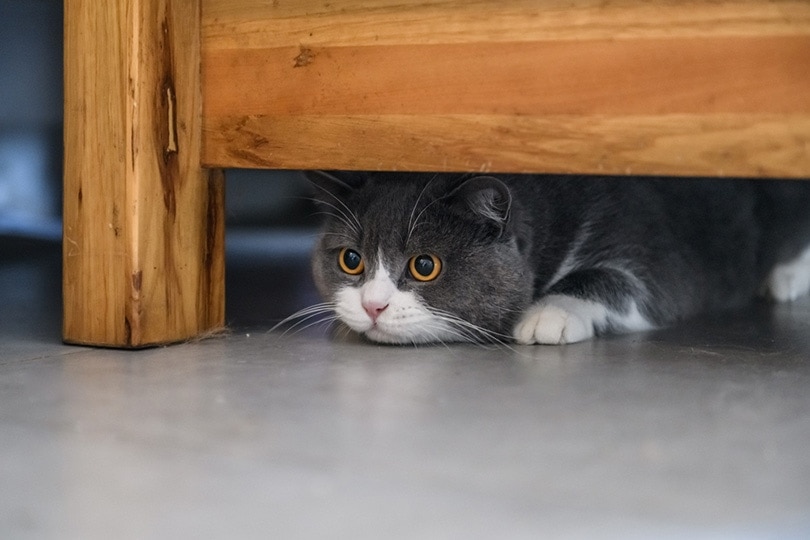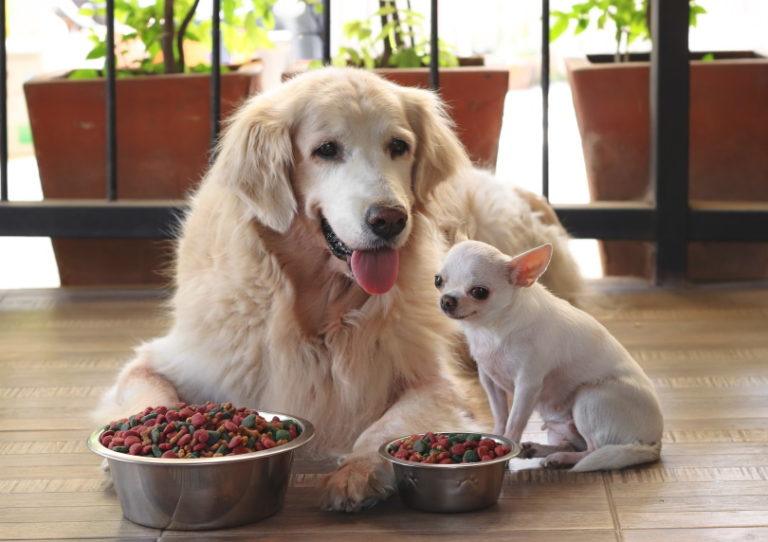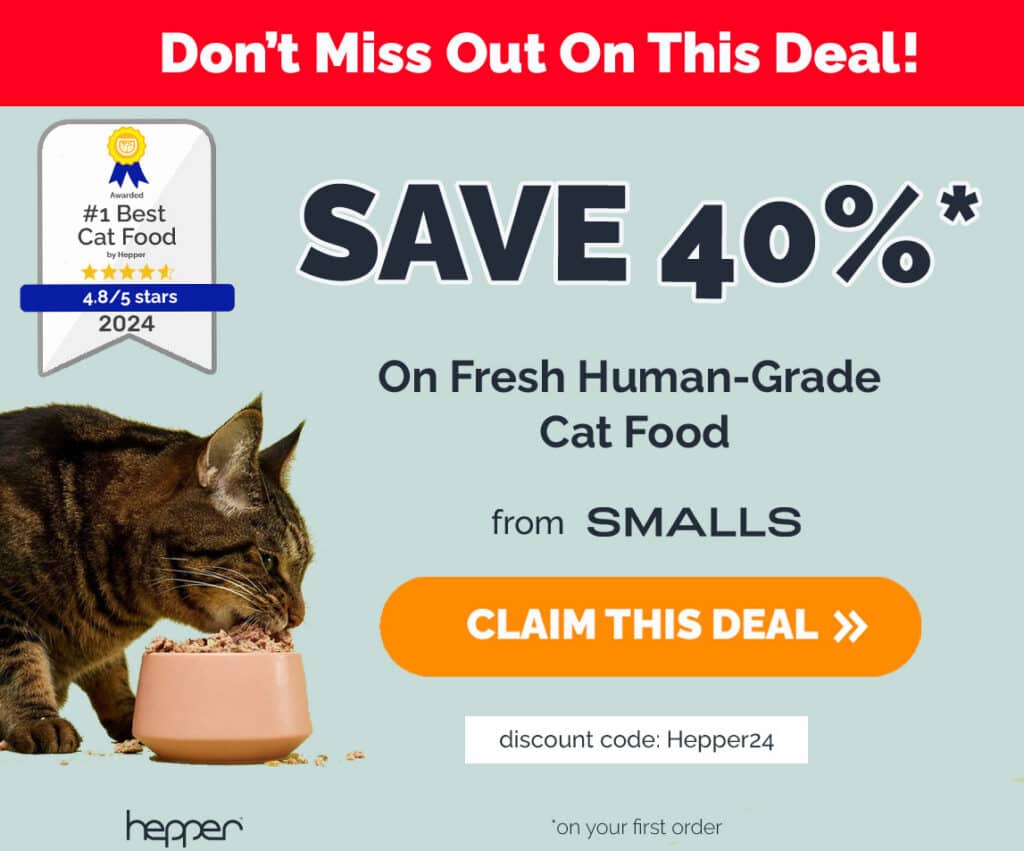9 Best Cat Foods for Indoor Cats – 2024 Reviews & Buyers Guide
Updated on
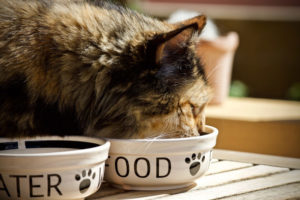
You love your cat more than anything, and you want them to be with you for a long time to come. One of the easiest ways you can achieve this is by feeding your cat a high-quality diet that meets all of its needs and is extra tasty to boot! Cats can be picky but finding the perfect food for your cat doesn’t have to be difficult.
We have reviewed the best cat foods for indoor cats to make it easier for you to find a starting point to find the perfect food that works for your cat’s individual needs.
Disclaimer: The foods reviewed here were chosen because they have certain characteristics that might help with some of the causes or consequences of this medical condition. However, they are not a medical treatment or a substitute for medical treatment. Keep in mind that each medical case is different and what works for some pets may not work for others. Your veterinarian is the right person to advise you on the best diet for your pet’s individual case.
A Quick Comparison of Our Favorites (Updated in 2024)
| Rating | Image | Product | Details | |
|---|---|---|---|---|
| Best Overall |

|
Smalls Human-Grade Fresh Cat Food Subscription |
|
Click to Save 40% Use code: Hepper2023 |
| Budget Buy |

|
Cat Chow Naturals Dry Cat Food |
|
Check Price |

|
Essence Ocean & Freshwater Dry Cat Food |
|
Check Price | |

|
Tiki Cat Chicken & Egg Dry Kitten Food |
|
Check Price | |

|
Applaws Fish in Broth Variety Cat Food |
|
Check Price |
The 9 Best Cat Foods for Indoor Cats
1. Smalls Human-Grade Fresh Cat Food Subscription – Best Overall
| Sizes | 50 kcal pouches |
| Protein | 54% |
| Fiber | 0.3% |
| Fat | 36% |
Smalls Human-Grade Fresh Cat Food is our top choice pick for best cat food for indoor cats. It’s made of real ingredients, no filler, and human-grade animal products. With up to 54% protein, depending on the flavor you choose, you know that your cat is getting the optimal nutrition they need. It gets conveniently delivered to your door.
The one downside is the price. It is more expensive than supermarket brands, but you get what you pay for in the quality, convenience, and taste (our cats devoured it). With excellent customer service and home delivery subscription service provided, it does make it worth it. But most important is the quality product that your feline friend will eat. For those reasons, we believe that Smalls is a great option for most indoor cats.
Unsurprisingly, Smalls’ fresh cat food recipes are also our pick for the best wet cat food for indoor cats. All in all, we think this is the best cat food for indoor cats available this year.
- Available in three different flavors
- Very high protein
- Low in fat and fiber
- Contains over 80% animal products
- Pricier
2. Cat Chow Naturals Original Dry Cat Food – Budget Buy
| Sizes | 15 pounds, 6.3 pounds, 13 pounds, 18 pounds |
| Protein | 34% |
| Fiber | 3% |
| Fat | 13% |
Our budget pick is the Cat Chow Naturals Original Dry Cat Food. This food is available in four bag sizes, making this food a good option for people with multiple cats. It has 34% protein and 3% fiber. Chicken is the first ingredient in this food, and it also contains salmon, whole grains, and leafy greens. It contains a special fiber blend that is intended to reduce hairballs. It’s high in omega 6 to support skin and coat health.
The second ingredient in this food is corn gluten meal, which isn’t an ideal ingredient in food for cats. Also, vegetables and grains are not completely necessary in this food since cats are obligate carnivores, but this food is nutritionally balanced.
- Four bag sizes are available
- Best value
- 34% protein
- Chicken is the first ingredient
- Special fiber blend helps prevent hairballs
- High in omega-6
- The second ingredient is corn gluten meal
- Vegetables and grains are not necessary ingredients
3. Essence Ocean & Freshwater Grain-Free
| Sizes | 4 pounds, 10 pounds |
| Protein | 40% |
| Fiber | 5% |
| Fat | 5% |
Another good dry cat food for indoor cats is the Essence Ocean & Freshwater Recipe Grain-Free Dry Cat Food. This food is available in two bag sizes and contains 40% protein, 5% fiber, and 17.5% fat. The first four ingredients are whole fish, including salmon and sardines, and the next three ingredients are different types of fish meal. This food is grain-free and potato, beef, and poultry-free, making it a superb pick for cats with food allergies and sensitive stomachs. The protein sources in this food are sustainable, making this a food pick that’s better for the earth than many other options. The variety of proteins in this food means it’s highly palatable, even for the pickiest cats.
This food is one of the more premium-priced products we reviewed. It’s a relatively high-fat food, so this should be considered when deciding whether this food is a good pick for your cat.
- Two bag sizes are available
- 40% protein
- The first seven ingredients are fish and fish meal
- Grain, potato, beef, and poultry free
- Sustainable protein sources
- Highly palatable
- Premium price
- High in fat
4. Tiki Cat Born Carnivore Chicken & Egg Dry Kitten Food
| Sizes | 8 pounds |
| Protein | 42% |
| Fiber | 5% |
| Fat | 22% |
Tiki Cat’s Born Carnivore Deboned Chicken & Egg Recipe Dry Kitten Food is the top choice for kittens and young cats. This food has 42% protein and 22% fat to support healthy growth and development. The first six ingredients are protein sources, including deboned chicken and dried egg products. It’s a good source of DHA, which supports brain and eye health and development. Most kittens find this food highly palatable, and many people report having to hide it to keep their kittens out of it.
This food is only available in one bag size and the high fat content means that this food is too high fat for adult cats to eat.
- 42% protein
- 22% fat supports growth and development
- Multiple protein sources
- Good source of DHA for brain and eye development
- Highly palatable
- Only available in one bag size
- Too high in fat for adult cats
5. Applaws Fish Selection in Broth
| Sizes | 16 2.47 oz cans, 12 5.5 oz cans |
| Protein | 15% |
| Fiber | 1% |
| Fat | 5% |
The best wet cat food for indoor cats is the Applaws Fish Selection in Broth Variety Pack. This food is available in two cans and pack sizes and contains 15% protein. It’s low in fat and fiber, and the tuna flavor only contains three ingredients, while the other two flavors contain four ingredients. Each flavor contains tuna filet as the first ingredient. This food is a good source of taurine, which supports cardiac and eye health. The whole ingredients and high protein content make this food highly palatable for picky cats.
This food is not formulated to be fed as the sole diet for your cat. It should be paired with high-quality dry food or fed in a rotation of healthy wet foods. This food is a premium price, especially if fed as the primary food in your cat’s diet.
- Available in two pack sizes and two can sizes
- 15% protein
- Low in fat and fiber
- Contains 3 – 4 ingredients
- High in taurine
- Highly palatable
- Not intended to be fed as sole food source
- Premium price
6. Tiki Cat After Dark Pate Venison & Beef Wet Food

| Sizes | 12 3oz cans |
| Protein | 13% |
| Fiber | 1% |
| Fat | 3% |
The Tiki Cat After Dark Pate Venison & Beef Liver Recipe Wet Cat Food is a good pick for cats who prefer wet food or can’t have poultry. Venison is an unusual protein source that most cats won’t have allergy issues with. It contains 13% protein and 1% fiber, which means it may be a good option for some diabetic cats if cleared by their veterinarian. The first three ingredients are venison, water for processing, and beef liver, making this food highly palatable and high enough in moisture to support hydration.
The consistency of this food is a relatively dense pate, which may not be soft enough for picky cats that prefer soft pates. This food is only available in one package size and one can size.
- 13% protein
- Good option for cats with allergies
- May work for some diabetic cats
- Highly palatable and supports hydration
- May be too dense for picky cats
- Only available in one package and can size
7. Natural Balance Original Chicken & Salmon Meal
| Sizes | 6 pounds, 15 pounds |
| Protein | 30% |
| Fiber | 8% |
| Fat | 5% |
The Natural Balance Original Ultra Indoor Chicken & Salmon Meal Dry Food is a good pick if you need a larger bag of cat food since it is available in 15-pound bags. It contains 30% protein and 8% fiber, making it a good option for preventing hairballs and making healthy poops. Chicken and chicken meal are the first two ingredients, and this food also contains salmon meal, dried egg, and other animal protein sources. It’s high in taurine and omega fatty acids.
This food may be too high in fat for most indoor cats, especially those that are sedentary. Unfortunately, the smallest bag of this food is 6 pounds, which is likely too large for testing out the palatability for your cat.
- Two bag sizes available
- 30% protein and 8% fiber
- Contains multiple animal protein sources
- High in taurine and omega fatty acids
- Too high in fat for most indoor cats
- Smallest bag is 6 pounds
8. Blue Buffalo Health Salmon & Brown Rice Dry Cat Food
| Sizes | 2 pounds, 5 pounds, 7 pounds, 15 pounds |
| Protein | 32% |
| Fiber | 6% |
| Fat | 15% |
The Blue Buffalo Indoor Health Salmon & Brown Rice Recipe Dry Cat Food is available in four bag sizes from 2 – 15 pounds. It contains 32% protein and 6% fiber with deboned salmon and chicken meal as the first two ingredients. It contains Blue Buffalo’s “LifeSource Bits”, which are vitamin, mineral, and antioxidant-packed kibble pieces that help support a healthy immune system. This food is high in omega fatty acids for skin and coat health.
Picky cats may not like the LifeSource Bits and may pick around them or refuse to eat the food altogether. While these pieces are small, the kibble pieces are larger than many other kibble options, which some cats may have difficulty with. This food is relatively high in fat for indoor cats.
- Four bag sizes are available
- 32% protein and 6% fiber
- Contains LifeSource Bits with vitamins, minerals, and antioxidants
- Good source of omega fatty acids
- Some cats may refuse to eat the LifeSource Bits
- Kibble pieces are larger than most
- High in fat
9. Purina Pro Plan LIVECLEAR Weight Management Dry Cat Food
| Sizes | 5 pounds, 5.5 pounds, 12.5 pounds |
| Protein | 43% |
| Fiber | 5% |
| Fat | 9% |
If you have an overweight indoor cat, then the Purina Pro Plan LIVECLEAR Adult Weight Management Formula Dry Cat Food may be a good option. This food is available in three bag sizes and contains 43% protein to ensure it helps your kitty feel satiated while it loses weight. It is lower in fat than most other adult cat foods at 9% and chicken is the first ingredient. This food is formulated to reduce the allergens produced by your cat, making this a good option for homes with people who have cat allergies.
Always check with your veterinarian before beginning any kind of weight loss efforts with your cat. Underfeeding and rapid weight loss in cats can be dangerous to their health. This food contains rice, corn gluten meal, and poultry by-product meal.
- Three bag sizes are available
- 43% protein and 9% fat
- Formulated to reduce the allergens produced by your cat
- Shouldn’t be fed without checking with the vet first
- Contains rice, corn gluten meal, and poultry by-product meal
Buyer’s Guide: Selecting the Best Cat Food for Indoor Cats
Cats can be fickle and picky, which can make finding the best cat food for indoor cats difficult. Picking the right food for your cat can often start with something as simple as finding a food that can be purchased in small enough quantities for you to gauge your cat’s interest. You don’t want to get stuck with a 15-pound bag of food your cat won’t eat! You’ll also need to consider your cat’s preferences toward food textures and flavors when picking a food. Kibble sizes, wet food textures, and flavor profiles are all things that may help you pick what food your cat may like best. Remember to switch new foods over slowly to prevent stomach upset.
- Dry: This is the most commonly fed type of food available. Dry cat food doesn’t aid in hydration, but it is usually nutritionally complete and contains all the necessary vitamins, minerals, and nutrients your cat needs for health and energy.
- Wet: A good option for picky cats and cats that don’t drink enough, wet food is primarily water. It can be nutrient-dense, but it often requires more food to be fed daily than dry food requires. Wet food can be fed as the primary source of nutrition, but it typically isn’t advisable since dry food can help with teeth and gum health.
- Raw: Raw diets are a major source of contention in the pet-owning and veterinary communities, and for good reason. Many people can’t safely offer raw meats to their cats without risking illnesses and infections, like salmonella and parasites. Raw diets are best left to the professionals, so if you can find a commercial raw diet you think might work for your cat, talk to your vet.
- Cooked: Some people home-cook meals for their cats, and more companies are beginning to offer this service as well. Without close consultation with your veterinarian and a veterinary nutritionist, home-cooking cat food isn’t advisable. It’s easy to overlook nutrients and unintentionally provide a diet that isn’t nutritionally complete.
While providing our feline companions with high-quality food is paramount, selecting the right food and water bowl is equally important. The modern yet practical design of our Hepper NomNom Cat Bowl combines cat-catered features, like whisker-friendly shallow dishes and slight elevation, with a contemporary style aimed at protecting your floors from messy eating and drinking. The NomNom is entirely dishwasher safe and was thoughtfully created with your cat’s health and well-being in mind.
- NO MESS - The 360° tray on this cat food and water bowl set has a raised design to catch and...
- WHISKER FRIENDLY - Shallow and wide metal containers with flat bottoms ensure your kitty can enjoy...
Final Verdict
From these reviews, do you have an idea of what your cat might like? We hope so!
The best cat food for indoor cats is Smalls human-grade fresh cat food, a quality fresh subscription customized to your cat. If you need a good budget option, Cat Chow Naturals Original Dry Cat Food provides high-quality nutrition and high palatability to your cat. All of the foods reviewed are great choices, though, and there’s something here for just about every taste and preference.
See Also:
- 11 Best Cat Foods for Pregnant Cats – Reviews & Top Picks
- 10 Best Foods for Outdoor Cats – Reviews & Top Picks
Featured Photo Credit: sweetlouise, Pixabay














